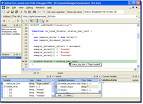First Thoughts on Second Life
 I've been listening with one ear to the buzz about Second Life and non-profits for a while now, and paying it very little attention. But Beth Kanter has an interesting post on July 25th that grew out of a conversation she had with Susan Tenby of TechSoup. The chat focused on Techsoup's recent enthusiasm for the virtual reality site -- Susan and her colleagues have constructed a virtual office for TechSoup on the SL and recently held a public online event there. I've been listening with one ear to the buzz about Second Life and non-profits for a while now, and paying it very little attention. But Beth Kanter has an interesting post on July 25th that grew out of a conversation she had with Susan Tenby of TechSoup. The chat focused on Techsoup's recent enthusiasm for the virtual reality site -- Susan and her colleagues have constructed a virtual office for TechSoup on the SL and recently held a public online event there.The interest in using Second Life for online community building in the non-profit space has been high lately, and not just on the geeky fringe. The American Cancer Society recently held a virtual Relay for Life fundraiser on SL that raised over $40,000 in pledges! You can read about the ACS interest in virtual reality here on their site. Mark Sirkin, who is the e-Marketing Director for the Leukemia and Lymphoma Society has also participated in both the TechSoup and ACS events and seems to be quite bullish on the potential of the technology. But check out his post yesterday for some more critical musings on this new medium. He's commenting on a lengthy review of the ACS event that appeared in the Second Thoughts blog. Serious people are talking about SL - and raising some serious money. But I have to admit that while the idea of doing serious work in a virtual environment is very appealling to me - I am a big Neal Stephenson fan after all - I haven't been able to make myself make the required investment in time to explore the place for myself. Instead I've been exploring Javascript libraries, which I had expected to be the subject of today's post. Hunh. Tags: nptech, secondlife, ACS Labels: nptech |











